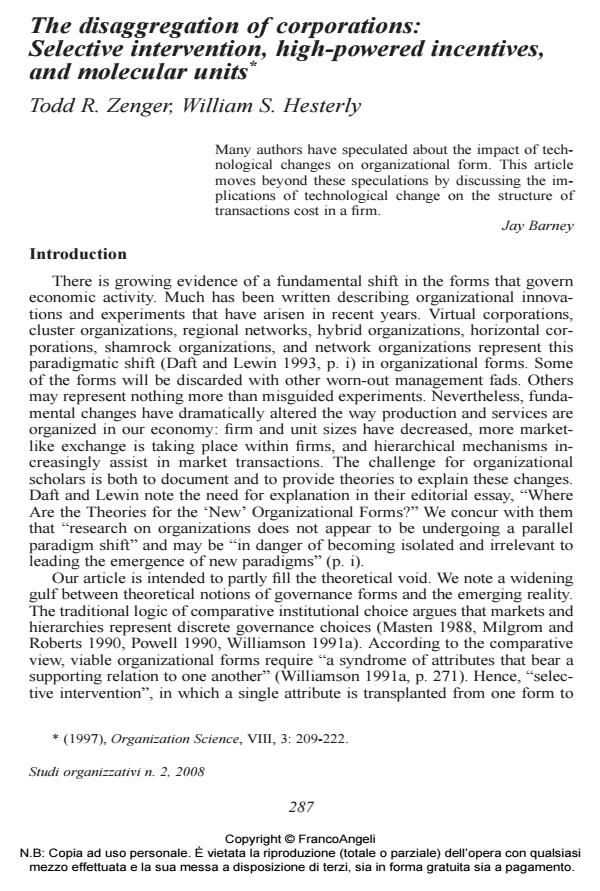The disaggregation of corporations: Selective intervention, high powered incentives and molecular units
Titolo Rivista STUDI ORGANIZZATIVI
Autori/Curatori Todd R. Zenger, William S. Hesterly
Anno di pubblicazione 2009 Fascicolo 2008/2
Lingua Inglese Numero pagine 0 P. Dimensione file 479 KB
DOI 10.3280/SO2008-002011
Il DOI è il codice a barre della proprietà intellettuale: per saperne di più
clicca qui
Qui sotto puoi vedere in anteprima la prima pagina di questo articolo.
Se questo articolo ti interessa, lo puoi acquistare (e scaricare in formato pdf) seguendo le facili indicazioni per acquistare il download credit. Acquista Download Credits per scaricare questo Articolo in formato PDF

FrancoAngeli è membro della Publishers International Linking Association, Inc (PILA)associazione indipendente e non profit per facilitare (attraverso i servizi tecnologici implementati da CrossRef.org) l’accesso degli studiosi ai contenuti digitali nelle pubblicazioni professionali e scientifiche
The disaggregation of corporations: Selective intervention, hig powered incentives and molecular units - A vast array of organizational innovations and changes are transforming US corporations. Large firms have dramatically downsized, refocused, and vertically disaggregated. They increasingly obtain goods and services, pursue complex development efforts, and exploit horizontal synergies without the aid of formal hierarchy. Large firms are also internally disaggregating into smaller, more autonomous units that are treated much like external subcontractors. The authors argue that these organizational innovations share an important underlying commonalty: economic activity is converging toward exchange involving either internal (within-firm) or external (between-firm) networks of small, autonomous production or service units. Small units and small firms have become the basic building block, the molecular units, of these new forms. Further, exchange among the small, autonomous units is commonly a mix of both market-like and hierarchical features. The authors develop a theoretical explanation for these trends. They argue that disaggregation is motivated by the powerful performance incentives that accompany small size. They further argue that disaggregation is facilitated hy recent innovations in information technology, organizational design, and performance measurement that permit the selective intervention of market elements in hierarchy and hierarchical elements in markets. The enhanced ability to intervene selectively necessitates a rethinking of traditional assumptions about the discreteness of governance choices. Innovations in organization, measurement, and technology shift decisions about optimal governance from simple market versus hierarchy choices to choices of an optimal mix of hierarchical and market elements. Consequently, managers and scholars must increasingly view organizations as complex webs of governance arrangements rather than as entities with definable boundaries.
- Bridging the work governance divide: Pluralism and performance Gustavo Magalhães de Oliveira, Maria Sylvia Macchione Saes, Wilson Aparecido Costa de Amorim, Anna Grandori, in European Management Review emre.12707/2025
DOI: 10.1111/emre.12707
Todd R. Zenger, William S. Hesterly, The disaggregation of corporations: Selective intervention, high powered incentives and molecular units in "STUDI ORGANIZZATIVI " 2/2008, pp , DOI: 10.3280/SO2008-002011